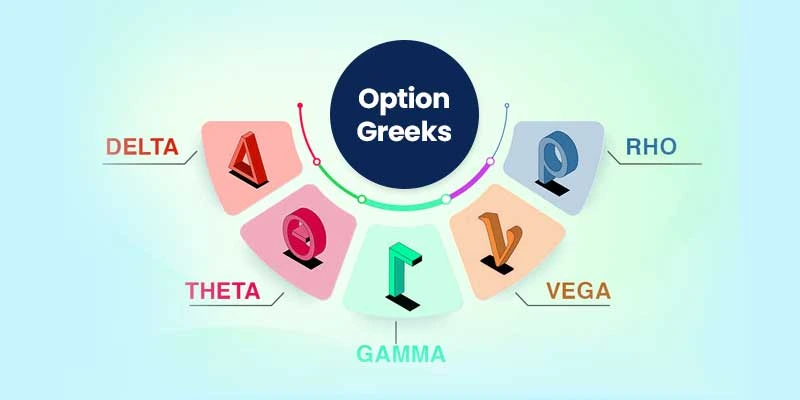Option Greeks are financial measures of the sensitivity of an option’s price to its underlying determining factors, such as the volatility of the underlying asset, time decay of the option, and the underlying asset’s price relative to the option’s strike price. The most commonly used Greeks are Delta, Gamma, Theta, Vega, and Rho.
The delta is usually calculated as a decimal number from -1 to 1. Call options can have a delta from 0 to 1, while puts have a delta from -1 to 0. The closer the option’s delta to 1 or -1, the deeper in-the-money is the option. Puts generate a negative delta because they have a negative relationship with the underlying security—that is, put premiums fall when the underlying security rises, and vice versa. Delta is also known as a hedge ratio. If a trader knows the delta of the option, he can hedge his position by buying or shorting the number of underlying assets multiplied by delta.
Suppose a trader has bought 1 Lot of 25000 strike CALL at Rs.100 when Nifty was at 25000. So it was an ATM Call. Now Nifty has risen by 100 points and reached 25100 mark.
So current rate of the premium = 100(point rise) *0.5(Delta Value) = 50. So Premium will rise by Rs.50. So now the Call that was bought at Rs.100 should be trading at Rs.150 (100+50)
Example – A trader has bought 25100 CALL when NIFTY was at 25000. So it was an Out of the Money Call.
He has paid Rs.100 for buying that Call so his Investment Value = 100(Premium)*25(lot Size) = Rs.2500
For OTM 25100 Call, Delta was 0.4.
Now Nifty goes up by 100 points from 25000 to 25100 Mark. So 25100 Call has now become At The money call.
So now premium amount will be Rs.140 i.e. {100(Point Rise) *0.4(Delta)}. His investment value would now be 140*25 = Rs.3500
Previously Delta of 25100 was 0.4 or 40% and now because 25100 has become at the money strike, its Delta has become 0.5 or 50%.
So 50 – 40 = 10%. What is this 10% ?????………….It’s nothing but Gamma.
4.Vega: it measures the risk of changes in implied volatility or the forward-looking expected volatility of the underlying asset price. While delta measures actual price changes, vega is focused on changes in expectations for future volatility. Higher volatility makes options more expensive since there’s a greater likelihood of hitting the strike price at some point. Vega tells us approximately how much an option price will increase or decrease given an increase or decrease in the level of implied volatility. Option sellers benefit from a fall in implied volatility, but it is just the reverse for option buyers. Vega can increase or decrease without price changes of the underlying asset due to changes in implied volatility. Vega can increase in reaction to quick moves in the underlying asset. Vega falls as the option gets closer to expiration.
5.Rho: It measures the price change for a derivative relative to a change in the risk-free rate of interest. Rho is usually considered to be the least important of all option Greeks. Rho measures the sensitivity of an option or options portfolio to a change in interest rate. Rho may also refer to the aggregated risk exposure to interest rate changes that exist for a book of several options positions. if an option or options portfolio has a rho of 1.0, then for every 1 percentage-point increase in interest rates, the value of the option (or portfolio) increases 1 percent. Options that are most sensitive to changes in interest rates are those that are at-the-money and with the longest time to expiration. Rho is positive for purchased calls as higher interest rates increase call premiums. Conversely, Rho is negative for purchased puts as higher interest rates decrease put premiums.

